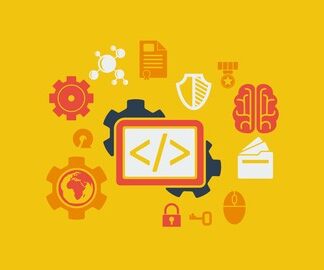Enroll in The Complete Python 3 Course: Beginner to Advanced!
Click here to subscribe for more videos like this!
Alright guys, so let’s get into functions. Now every programming language basically has functions, I mean they’re going to be different depending on which programming language we’re discussing, even COBOL has functions but they’re radically different because that’s just an entirely different language. However, basically if you have any experience with PHP, JavaScript, functions are going to look a lot, very well very similar. So, we are now past the need to use an interpreter and what we’re going to be doing from here on out is using our IDE that we have installed. Again I want you guys to follow along maybe even do some extra repetitions of this just to get used to it. So, the first lesson here in the subsection of functions is going to be building a function, so pretty simple, we’re going to build a function, we’re going to call it, and we’re going to run the script. So let’s go ahead and drop down a couple lines, and also we’re gonna go over some pep guidelines throughout this course. We’re probably going to have a module specifically for pep, but as I go along and I see or think of anything that’s addressed in the pep guidelines, I’ll let you know. So basically what pep is is Python’s style guide, so it’s like how to write certain things and certain you know we always drop down two lines between any texts or at the top of the script. So, we would have our imports up there, and then drop down two lines, and then start coding. So we drop down two lines we’re gonna instead of typing function we’re gonna “def” and what this is telling Python is that it’s going to define a function. So we write def and then the name of the function. Now regarding naming functions there’s a specific way to do it according to the pep guidelines. This isn’t new, this specific instance, it’s using snake case for function names. So if you know camel case that’s basically like this that’s that looks like, the first letter of each word is capitalized, that’s used in Python for class names but it’s not used for functions. When you define a function in Python you’re encouraged to use snake case which is separating words with underscores, so that’s what we’re going to do. So I’m going to create a function here called my function. So basically so far we’ve got “def” which says we’re about to define a function, we’ve got the name of our function, and then we’ve got brackets right here and these brackets are going to be used for parameters which we’re going to be going over in one of the next videos, they’re also called called arguments. Now after we do this here’s the point when in most programming languages you’d open your curly braces and start to code, but instead with Python where we don’t use those curly braces we just put a colon here. Now this is going to be smart, I mean Python’s smart because it’s going to automatically determine when this function is complete based on indentation, so based on that you can probably assume how we’re supposed to use this, but we can’t enter you’ll notice that it automatically indents four spaces in. This is because anything four spaces in from the left hand side as of right now is going to be the top level of this function and then you can further intense stuff, and we’re gonna explore that as needed as we go on. So this is going to be just a very basic function that prints something out, so let’s go ahead and print out this is my function, and then we come down here, and we removed the indentation telling the function that we’re done. So now anything we write here is not considered inside that function. Now we could, we could additionally put more in this function simply by doing that and writing more indented to the fourth space in, and now also with Python this isn’t something that I’ve mentioned yet i don’t think but you don’t need to end statements with a semicolon liking in a lot of other programming languages, so just keep that in mind. Now we can drop down out of that, out of that function and now we can call that function. So to call a function you’re just gonna type the name of the function, and then any parameters that you’re going to pass in which would go in these brackets. In this case we’re not going to put anything in these brackets because we’re not passing in arguments, we’re going to be over that in the next video. Now actually you can see PEP 8: no newline at end of file which means we need a new line at the end file. You’ll see that the issue has been resolved. So PyCharm will kind of let you know if you’re ignoring or just not using any pep guidelines in your code. So let’s go ahead and save this and let’s go ahead and run, and as you’ll see down here in the console it first printed out this is my function, and then it printed out a second string. So if we look up here at the code again we’re going to go over the flow of this one more time. We’re defining a function, we’re function my function so that we can call it by that name, and we’re putting brackets here which will contain arguments at some point, you don’t have to, If your function doesn’t take arguments, it doesn’t need outside information, just don’t put anything in there, and then a colon which starts the indented block of code on the next lines which is indented four spaces. Now, I mentioned further indentation like in a function like eight spaces, 16 spaces, that’s for each block of code, and that’s not really something I can explain further, you guys are going to see it as we go on. So anyway this is the function because they’re both invented to four lines of Python knows that’s inside the function, and then down here outside the function we’re calling the function making it printed out. So, in the next video we’re going to talk about arguments and how to use those inside your functions.










